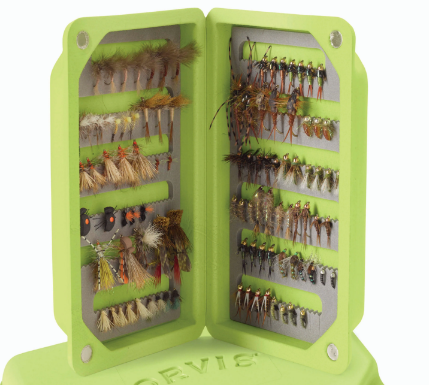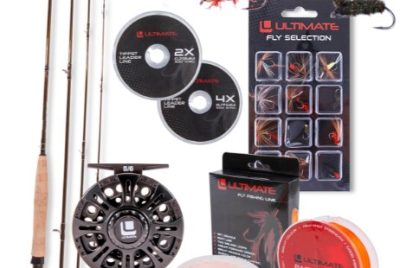Dry Fishing Flies
Introduction
Picture a serene river, the early morning sun glistening on the water, and the excitement of casting a delicate dry fly onto the surface, waiting for the telltale rise of a trout. As a passionate fly fisher, I’ve come to appreciate the allure of dry fishing flies. In this article, I’ll take you on a journey into the world of dry fly fishing, offering insights, tips, and reasons why these flies hold a special place in the hearts of anglers.
Why Choose Dry Fishing Flies?
Dry flies are a vital part of the fly angler’s toolkit. Their unique appeal lies in their ability to mimic insects on the water’s surface, enticing fish to rise and strike. The thrill of watching a fish break the surface to take a dry fly is hard to match, and it’s a significant reason why dry flies are a favourite among fly anglers. In addition, dry flies are versatile and effective in various fishing scenarios.
Types of Dry Fishing Flies
The world of dry fishing flies is incredibly diverse, with countless designs and patterns. I’ll explore different types of dry flies, from classic patterns to modern innovations. You’ll discover when and where to use each type and how to identify them.
Selecting the Right Dry Flies
Choosing the right dry fly is crucial for success. I’ll provide tips and guidance on selecting the perfect flies based on factors such as local insect hatches, fishing location, and time of day. Understanding the feeding habits of fish and the insects they target is key to making the right choice.
Fishing Techniques with Dry Flies
Effective dry fly fishing requires specific techniques. I’ll share insights into dry fly presentation, casting, and retrieving methods that maximize your chances of success. You’ll learn how to create a convincing illusion that entices fish to strike.
Essential Gear and Accessories
Dry fly fishing requires specific gear and accessories, from fly rods and lines to leaders and tippets. I’ll discuss the essential items you need to ensure a successful and enjoyable dry fly fishing experience. The right gear is your key to landing those rising fish.
Dry Fly Fishing Locations
Not all fishing spots are created equal when it comes to dry fly action. I’ll introduce you to some of the best locations for dry fly fishing, including renowned rivers, streams, and lakes where dry flies shine. These destinations offer memorable angling experiences.
Fishing Seasons and Insect Hatches
Understanding the correlation between fishing seasons and insect hatches is essential. I’ll explain how matching flies to the seasonal hatches increases your chances of success. You’ll gain insights into various insects that fish target and when they are most active.
DIY Fly Tying
For those who want to take their fly fishing to the next level, I’ll encourage you to explore DIY fly tying. I’ll provide resources, materials, and insights into the satisfaction of tying your own flies. This creative aspect of the sport adds a personal touch to your angling adventures.
Fishing Ethics and Conservation
Responsible angling is at the heart of fly fishing. I’ll discuss the importance of ethical fishing practices, from catch-and-release techniques to respecting fishing regulations and protecting the environment. Ensuring the sustainability of the sport is a collective effort.
Success Stories and Tips
No article on dry fly fishing would be complete without sharing success stories and tips from experienced anglers. You’ll hear inspiring accounts of memorable catches, and you’ll discover tips and techniques to enhance your own dry fly fishing experiences.
Conclusion
In conclusion, dry fishing flies are the magic wands of fly fishing, opening doors to exciting surface action and thrilling encounters with fish. Whether you’re a seasoned angler or just beginning your fly fishing journey, there’s something special about casting a dry fly and watching nature take its course. I encourage you to dive into the world of dry fly fishing, experience the excitement, and savour the magic of surface fishing.
FAQ’s
- What is the primary difference between dry flies and other types of fishing flies?
- Dry flies float on the water’s surface and imitate insects in their adult stage, while other fly types, like nymphs, imitate aquatic insects below the surface.
- Can I use dry flies in all fishing conditions, or are they best suited for specific scenarios?
- Dry flies are most effective when fish are actively rising to the surface to feed on insects. However, they can be used in various fishing conditions.
- How do I choose the right dry fly for a specific fishing location or time of day?
- Understanding the local insect hatches and the fish’s feeding habits is key. Observing the water and seeking advice from local anglers can also be helpful.
- Is DIY fly tying suitable for beginners, or should I have prior experience in fly fishing?
- DIY fly tying is accessible to beginners, and there are plenty of beginner-friendly resources available. You can start tying your own flies even if you’re new to fly fishing.
- What is catch-and-release, and why is it essential in fly fishing?
- Catch-and-release is a practice where anglers release fish they’ve caught back into the water. It helps conserve fish populations and sustain healthy ecosystems for future generations of anglers.



